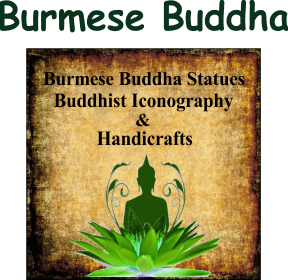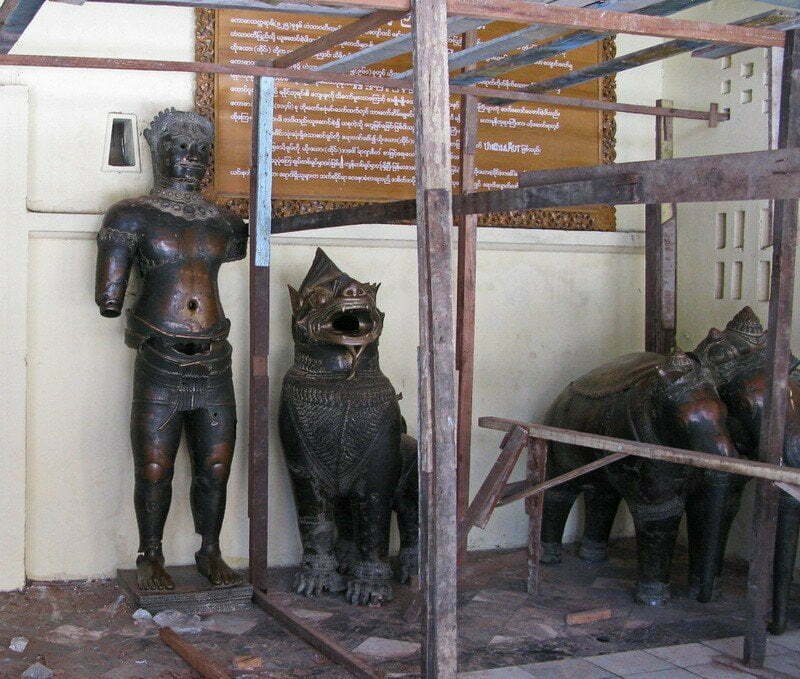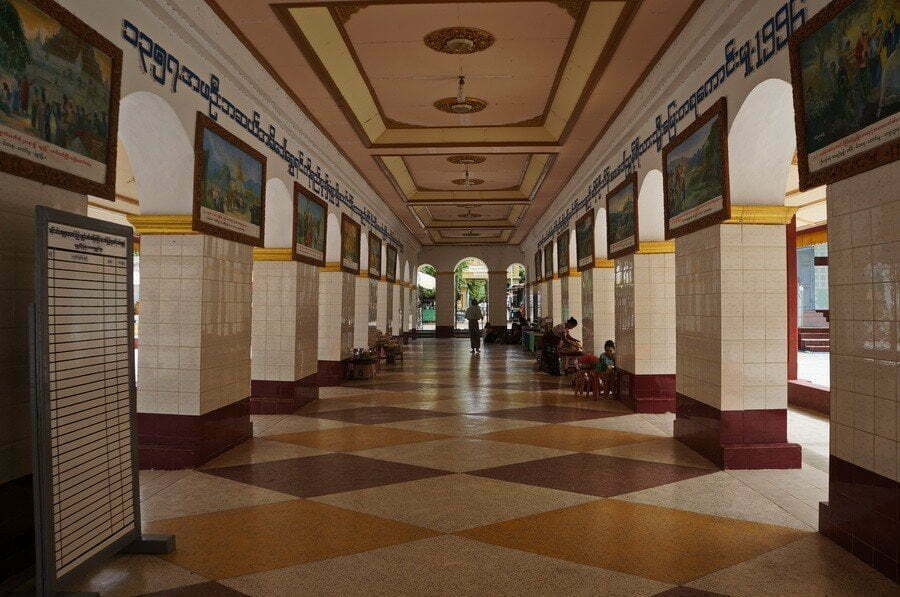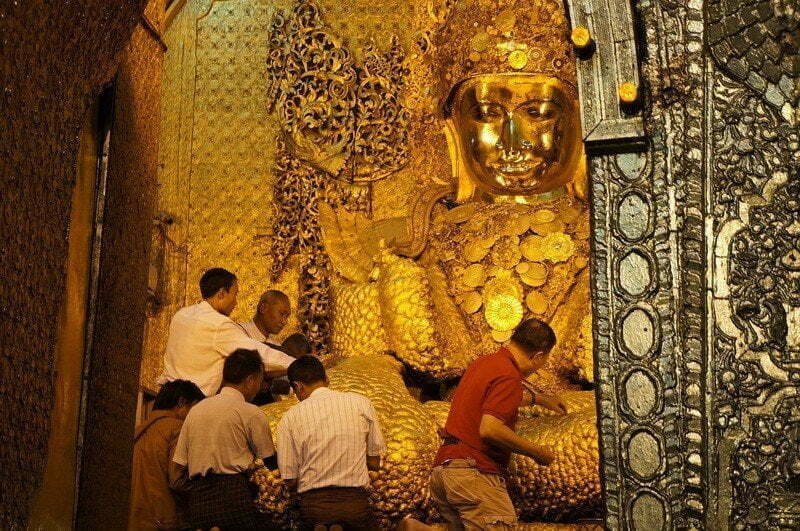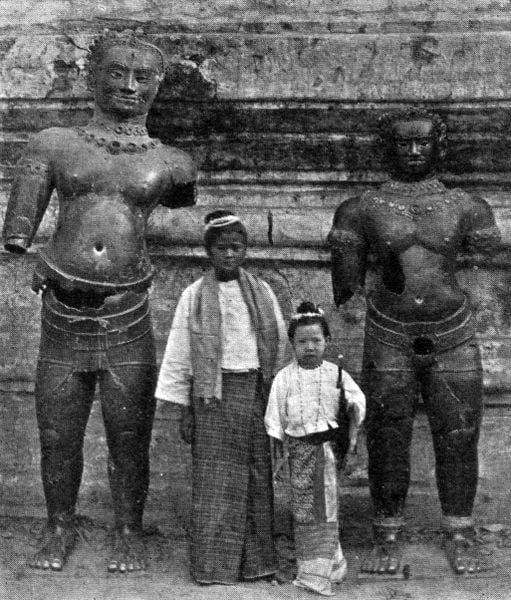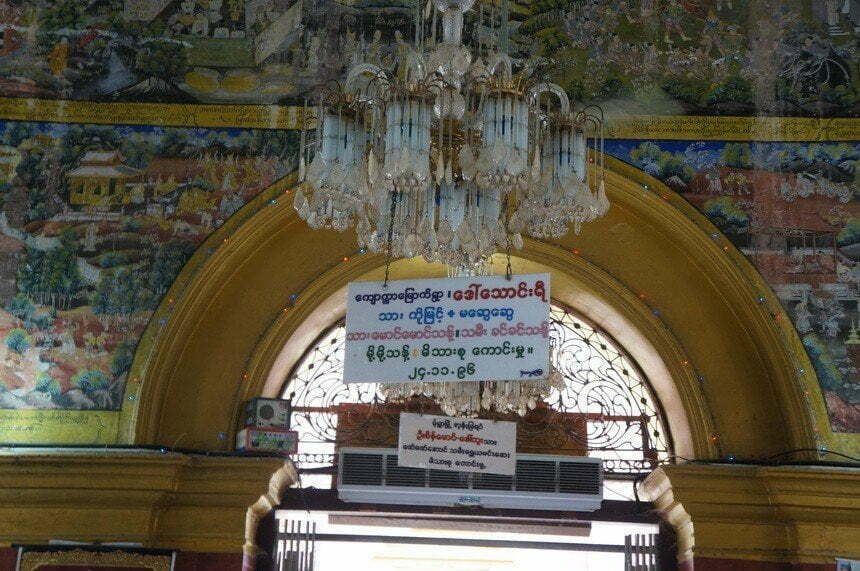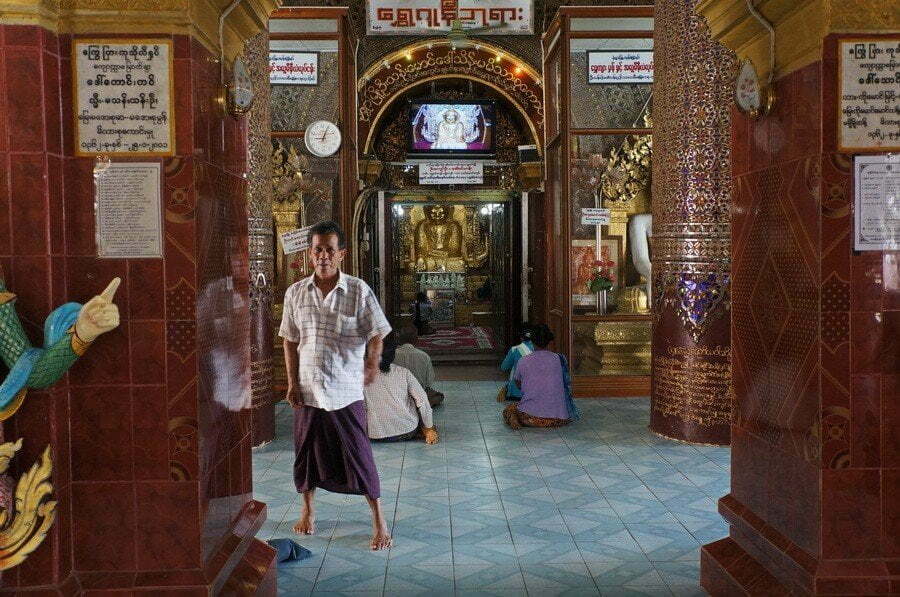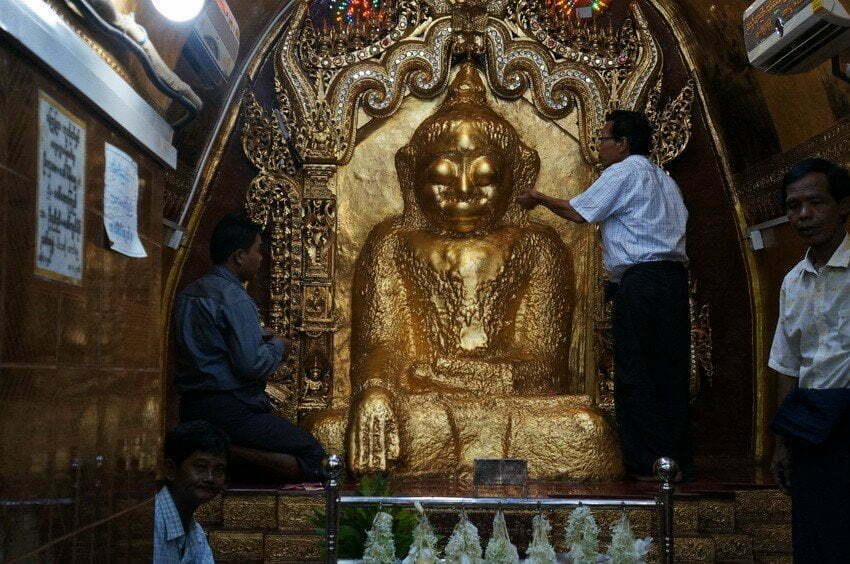
Mahamuni Buddha Statue in Mahamuni Pagoda
The most revered Buddha statue in Burma is the Mahamuni Buddha Statue in Mahamuni Pagoda in Mandalay – located in Chan Mya Tha-si township, with its beginnings shrouded in mystery. Gold applied to the statue on a daily basis for hundreds of years can only invoke the imagination as to how it originally appeared before it was taken from Arakan during the rule of King Suriya during the 2nd century.
in 1784 Crown Prince Shwe Daung, the eldest son of King Bodawpaya was ordered to conquer the Rakhine Kingdom and to bring the Mahamuni Buddha statue back to his capital Amarapura, eventually being transported to its current location where it is enshrined in the inner chamber of the Mahamuni Temple.
Maha in Pali means “Great” and Muni means “Sage”, one of the attributes of the Buddha “The Great Sage”. According to legend and myth around the casting of the Mahamuni Buddha statue in 554 B.C., the presence of the Buddha presiding over the event is unfounded. However, according to the historian Thaw Kaung the legend has been recorded in various chronicles and old Buddhist texts, such as the Sappadana Pakarana, an ancient Rakhine manuscript which refers to the Mahamuni Buddha and its history.
If the Mahamuni Buddha statue was made in 554 B.C., it would be the oldest man-made image of the Buddha in the world and at the time of casting the Buddha would have been approximately 69 years old. Historians and archaeologists adhere to the view that the first image of the Buddha date to the 1st or 2nd century CE and are those of the Gandharan-style statues found in Afghanistan.
Selected writings and excerpts from the writings of Thaw Kaung a Burmese university librarian, historian and a leading authority in Asian library studies, specializing in the preservation and archival of traditional documents and manuscripts presents his own research along with other accounts and views written by historians and archaeologist on the myth and legends of the Mahamuni Buddha Statue.
The Buddhist people of Myanmar have accepted legendary accounts of the Buddha visiting various parts of Myanmar, though scholars after much research write that Gaudama Buddha (c.563- c. 483 BC) probably never left his homeland, the area between Kapilavastu and Benares about a hundred miles away in Northern India and Nepal.
The full text of this tradition is given in Appendix 1 page 144 written by Emil Forchhammer.
“Here I will give only a gist – According to the Mahamuni tradition the Buddha accompanied by his brother and closest disciple Shin Ānanda with 500 rahans (monks) made an aerial journey to Rakhine and alighted on the summit of the Selagiri Hill opposite Kyauktaw town”.
The Rakhine King Sanda Thuriya (Candrasuriya) of Dhanyawadi (Dhanyavati) accompanied by Sandra Mala (Candramala ), the Chief Queen with her 1,600 handmaidens, the King’s ministers and numerous followers went to pay homage to the Great Teacher. After residing in the King’s capital, the Buddha made preparations to return to Tha-wut-hti (Srāvastī) and the King supplicated: “Oh Lord if you wander about from place to place in distant countries we shall have no opportunity to pay homage to you. Therefore, for my own good and that of others, I pray you leave an image of yourself “.
The Buddha readily agreed making the King and the people of Arakan (Rakhine) joyous. So preparations were immediately made. The Buddha called on two heavenly Lords, Sakra (Indra) the King of the divine beings, and Visvakarman, the celestial architect, ordering them to make an image with the treasures donated by the King, Royalty and populace. In this image, the Buddha stipulated, “shall not vary from the actual size of my body even by the breadth of a hair.” After the image had been cast the Blessed One desirous of imparting some of his glory to the image, breathed upon it, when Lo! and behold! the image was transformed into a life-like one, so life-like indeed that there appeared before the peoples’ eyes two Buddhas, the Buddha in person and his golden bronze image.
Large 15th Century Cambodian bronzes – Mahamuni Pagoda
The Mahamuni Pagoda is home to six large bronze images which were taken from Angkor Wat in Cambodia in the 15th century. The bronzes consist of the three-headed elephant Airavata referred to as Erawan in Thailand, two warrior statues that stood guard over Angkor are believed to have healing qualities and today many people believe that by rubbing the corresponding parts of the statue’s body it will cure their ailments.
Read more about the amazing Myth and legend of the Mahamuni Buddha.
